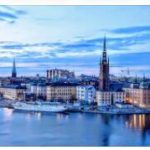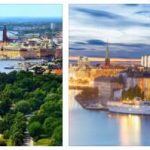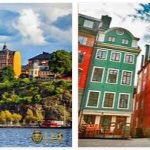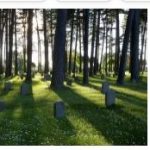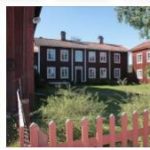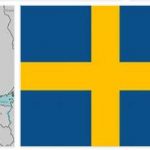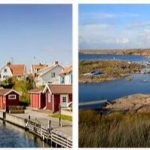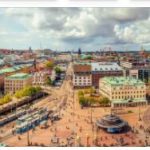According to ehistorylib, Stockholm, is the capital of Sweden, between Lake Mälaren and the Baltic Sea, built on skerries, islands and peninsulas and the adjacent mainland, with (2018) 962 154 residents.
Stockholm is home to Sweden’s most important cultural institutes: universities and colleges, academies, the Nobel Foundation, the Royal Library, museums, theaters and opera.
Stockholm’s economic life is shaped by finance, tourism, trade and research. The most important branches of industry are the pharmaceutical and biotechnological industry as well as the electrical and electronics industry. The city is also the country’s most important transport hub (ferry port, Arlanda airport).
The historical buildings date from the 13th, 17th and 18th centuries: Riddarholm Church with Swedish royal tombs, German church, knight’s house, royal castle. The town house dates from the beginning of the 20th century. – Stockholm, first documented in 1252, was founded as a trading center. In 1634 it became the capital.
Cityscape
The old town (Gamla Stan) is located on the islands of Stadsholmen, Helgeandsholmen, Riddarholmen and Strömsborg; only here in the historical center of the city have some of the medieval streets been preserved. In the north-east corner of Stadsholmen lies the Royal Castle, begun in the style of Roman high baroque by N. Tessin the Younger in 1697 and continued by C. Hårleman in 1720. Near the castle is the Storkyrka Sankt Nikolai, a five-aisled hall (in the oldest parts 13th century, redesigned in Baroque style in 1736–42); it houses the St. George group (1489, by B. Notke).
Palmstedt’s stock exchange is located south of the church(1767–76), the most beautiful Rococo building in the city. Tyska Kyrkan (German Church) Sankt Gertrud (1638–42), still late Gothic on the outside, is baroque. In addition to the splendid Riddarhuset (knight’s house; 1641–74), some town houses in the Renaissance style from the 17th century (including Petersenska huset, 1645–49; Schantzska huset, 1650), as well as the Bonde palaces (Bondeska palatset; 1662–73, today Supreme Court) and Oxenstierna (Oxenstiernska palatset; 1652–54) and on the island of Riddarholmen Wrangel (Wrangelska palatset; 1652–70, expanded in the 20th century). The Riddarholm Church (begun at the end of the 13th century) was gradually added to chapels as the burial place of the Swedish kings. The Reichstag building (1894–1906) is on the small island of Helgeandsholmen.
In the northern city center are the Jacobskirche (begun 1580–93) and the Adolf Frederiks Church (1768–83, Carl Fredrik Adelcrantz). On Gustav-Adolf-Platz (Gustav Adolfs Torg) are the opera house (1891–98, Axel Anderberg) and the Erbfürstenpalais (Arvfurstens palats; 1783–94, von Palmstedt), to the north of which is the theater (Dramatiska Teatern; 1901–08, Fredrik Lilljekvist), a major work of Art Nouveau in Sweden.
Kungsgatan with the two towers (Kungstornen, by Sven Wallander and Ivar Callmander) was laid out as a shopping street in the early 1920s. The modern business center was built around Sergels Torg (with the Kulturhaus, 1966–70, Peter Celsing) and Hötorget (with the concert hall, 1923–26, Ivar Tengbom; before that, Orpheusbrunnen by C. Milles, 1930–36). A landmark of Stockholm is the Stadshuset (1911–23, by R. Östberg) in the style of Swedish national romanticism. In the forest cemetery (Skogskyrkogården; laid out by E. G. Asplund and Sigurd Lewerentz, Inaugurated in 1920; UNESCO World Heritage Site) is located, among other things. a crematorium in Asplund (1935–40).
The “Gröndal” housing estate (1946–51, S. Backström and L. Reinius) and the satellite town “Vällingby” (1953–59, S. G. Markelius) are trend-setting urban developments. According to plans by Svante Berg and Lasse Vredblad, the “Globe City Project ” with the “Globe Arena” (1986-89), a huge dome structure (85 m high, 110 m diameter), which is used as a sports and Cultural center serves. With the appointment as »European City of Culture 1998«, numerous urban development projects were again carried out in Stockholm. The city’s sights also include the majority of the underground stations, which, with the help of numerous artists, have developed into true art stations.
Among the numerous museums stand out architecturally: the National Museum (1850–66) by F. A. Stüler, the Nordiska Museet (1889–1907) by I. G. Clason, the Moderna Museet and Arkitekturmuseet (1994–98) by J. R. Moneo (after the closure of Hederus, Fråne, Malmström renovated and reopened in 2004) and the Wasamuseum (1987–90) by Göran Månsson and Marianne Dahlbäck.

